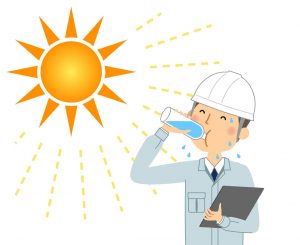 While sunshine and warm temperatures are a welcome sight after a gloomy winter, it is important to remember that working outdoors in hot weather is a health hazard.
While sunshine and warm temperatures are a welcome sight after a gloomy winter, it is important to remember that working outdoors in hot weather is a health hazard.
May 1 through September 30, Washington State requires that all employers with employees exposed to outdoor temperatures above applicable levels implement a heat stress program.
An Outdoor Heat Exposure Prevention Plan should be part of your district’s Accident Prevention Plan.
Requirements
The general requirements for employers are to:
- Provide annual training to employees and supervisors on symptoms of outdoor heat exposure and policies in place to prevent heat-related illness;
- Increase the volume of water available to employees on days when temperatures require preventive measures; and
- Have the ability to appropriately respond to any employee with symptoms of heat-related illness.
Workers experiencing heat-related illnesses such as heat exhaustion or heat stroke can exhibit a wide variety of symptoms including: dizziness, headaches, vomiting, or fainting.
The Washington State Department of Labor and Industries has an educational card available that fully describes the specific symptoms of heat-related illness, and steps employees can take to prevent it. In addition to the tips listed in our heat safety infographic (accessible version), employees should also take care to limit caffeine intake, and be aware of any side effects of medication they are taking that could increase the risk of heat-related illness.
OSHA: Water. Rest. Shade.
LNI: Outdoor Heat Exposure



